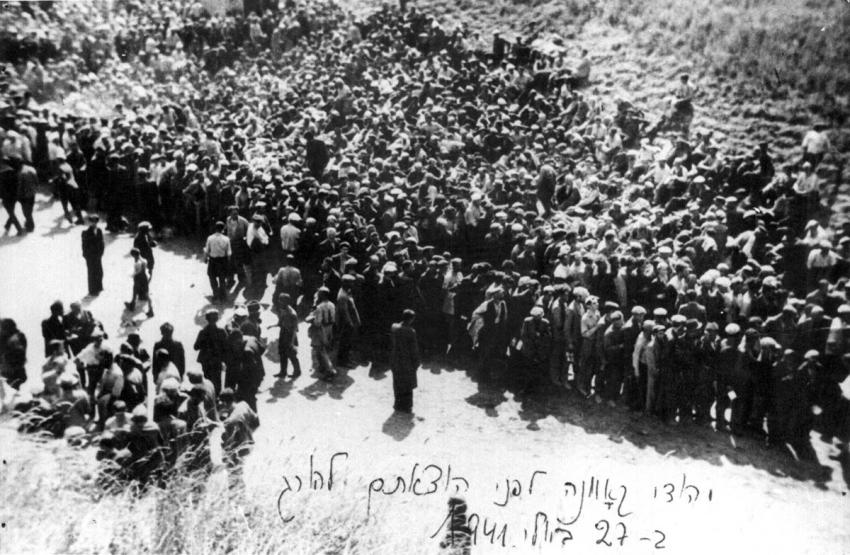When the Germans occupied Kovno on 24 June 1941, some 25,000 Jews were living there. The following day, Lithuanian nationals attacked the suburb of Slobodka (Vilijampolė), and murdered approximately 800 Jews, including babies. Concurrently, Lithuanians murdered dozens more Jews at the Lietukis garage in central Kovno, close to Wehrmacht headquarters. Wehrmacht soldiers looked on and did not intervene to prevent the carnage.
Shortly afterwards, Lithuanian nationals started to seize Jews on a daily basis and incarcerate them in the Seventh Fort, one of nine fortresses built around Kovno during Russian Imperial rule. Within a few days, some 10,000 Jews had been confined in the Seventh Fort. The prisoners were abused and starved,and then shot by the Lithuanians. According to the report submitted by Karl Jaeger, commander of the SD and the Security Police in Lithuania, 2,930 men and 47 women were murdered at the Seventh Fort between 4-6 July. In all, some 10,000 Jews were murdered within the first six weeks of the Germans’ arrival, most of them in the Seventh Fort.
The Kovno ghetto was established in August 1941, and almost 30,000 Jews from Kovno and the surrounding areas were confined there. At the same time, the murder of the Jews continued. On 7 August 1941, the Lithuanians caught 1,200 Jewish men and imprisoned them in the Kovno prison. Almost 900 of them were murdered in the Pravieniskes camp.
In December 1941, Jaeger wrote:
"...I can confirm today that Einsatzkommando 3 has achieved the goal of solving the Jewish problem in Lithuania. There are no more Jews in Lithuania, apart from working Jews and their families.
…The goal of clearing Lithuania of Jews could only be achieved through the establishment of a specially selected Mobile Commando under the command of SS Obersturmfuehrer Hamann, who adopted my aims fully and who was able to ensure the cooperation of the Lithuanian Partisans and the Civil Authorities concerned.
The carrying out of such Aktionen is first of all an organizational problem. The decision to clear each sub-district systematically of Jews called for a thorough preparation for each Aktion and the study of local conditions. The Jews had to be concentrated in one or more localities and, in accordance with their numbers, a site had to be selected and pits dug. The marching distance from the concentration points to the pits averaged 4 to 5 kms. The Jews were brought to the place of execution in groups of 500,with at least 2 kms distance between groups... All the officers and men of my command in Kovno took an active part in the Grossaktionen in Kovno. Only one official of the intelligence corps was released from participation on account of illness."
In his report, Jaeger also noted that Jews only remained in the ghettos of Siauliai, Kovno and Vilna. Three months later, in an additional report, he wrote that his unit had murdered 136,421 Jews, including 55,556 women and 34,464 children.







